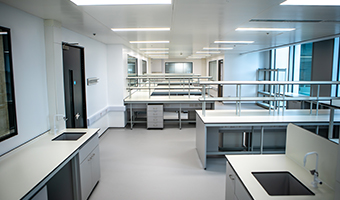The following article is featured in our Thames Valley Office Market report 2013, which can be downloaded above, or by clicking here.
The Thames Valley, a favoured location
To U.S corporates, the Thames Valley has historically been the favoured location for European headquarters and an easy travel gateway through Heathrow. Clients opening offices are surprised by the ease of rail travel to Heathrow and London from towns such as Reading, Maidenhead and Slough; the time it takes to get from Reading to Paddington is less than travelling across London.
In addition, there is a deep labour pool that companies can recruit from, with influential universities creating a knowledge bank for influential businesses.
The combination of travel ease, minimal language barriers, access to London without central London costs, and the ability to be an easy gateway to other European markets have all driven the attraction over the years. Oracle, Microsoft, Dell, Adobe, Computer Associates and Symantec are just some of the tech-titans now with major presence in the Thames Valley.
Others are following suit; Pegasystems, a long-time Reading client based in Cambridge, USA, recently evaluated its Reading base while considering a relocation to London or another Thames Valley office market. Ultimately, a decision was made to relocate within Reading to One Reading Central.
According to Dan Ryan, Vice President of Real Estate & Facilities at Pegasystems: “The decision to stay in Reading/the Thames Valley was based on three factors: 1) transportation hub into Heathrow and London, 2) proximity for existing workforce, and 3) the ability to find a modern office building with the amenities for employees.” Reading ticked all of these boxes, allowing Pegasystems to recruit new employees, benefit from urban amenities, and accommodate the commuting patterns of the existing workforce.
What’s next? The opportunity and the new players
The percentage of companies looking to establish European locations early in their lifestyle has increased greatly in the past two years. In fact, many of our emerging growth clients in industries such as social software, big data, mobile, robotics and medical devices are looking to diversify their engineering and R&D to European locations. Central London has been a hotbed for establishing such engineering beachheads, along with Dublin, Amsterdam and Munich.
However, venture-backed and emerging growth clients are no longer trying to grow all of their R&D, engineering presence and management teams in one location; the venture capital and Boards are pushing for international diversification of product development.
This change has meant a comparative location review of various markets.
Mark Cote is Managing Director of T3 Advisors, a Boston and Silicon Valley-based tenant representation firm. Since its launch in 2001, T3 has advised more than 300 corporates on real estate projects in the U.S and worldwide. It has partnered with Lambert Smith Hampton on projects in the Thames Valley, central London and Dublin, including the recent acquisition of office space for Fleetmatics and Pegasystems in Reading.
Here’s T3’s take on the key drivers for those locations, and where the Thames Valley is positioned:
Urbanisation: Clients recruiting young engineering talent and relocating a few existing U.S employees look first to the ‘urban tech hub’ markets such as the Silicon Roundabout, Paddington, the Docks in Dublin, or emerging hubs in North and East London.
Urbanisation means companies don’t want to be in isolated suburban settings, they want easy transport access and walkable amenities, as well as a work/life balance.
Where is the Thames Valley positioned? Reading, Maidenhead and Slough offer urban environments at a lower cost, while being easily connected to London. As the core London markets heat up and costs increase, we believe we’ll see more industry players considering the Thames Valley as an alternative to central London.
For those U.S corporates that haven’t the UK markets, there is a perception that the Thames Valley is akin to a U.S suburban office park. In reality it can deliver urban locations without certain central London headaches.
Community creation/renewal: In addition to urbanisation, companies want to be in ‘tech community’ markets. For instance, Boston’s Seaport District, San Francisco’s SOMA, Silicon Valley’s Palo Alto/Mountain View have all become more than real estate markets; they are vibrant tech communities. The U.S tech markets have established themselves in urban renewal locations in various cities - these markets were once shunned by companies as too ‘gritty’, but that is now the appeal for the young workforce.
Where is the Thames Valley positioned? This urban renewal trend will be seen in many central London markets and, having spent time in the Thames Valley, it is just as likely to be seen in Reading and Slough.
The Thames Valley has the opportunity for community creation within unique real estate markets such as Maidenhead, Reading and Slough. Urban renewal is part of community creation, where companies are locating in areas that have ‘urban grittiness’. We are seeing this trend throughout the major U.S tech markets, with companies now flocking to renewal projects. In time, and with proper planning and leadership, towns like Reading and Slough are in a strong location to capitalise on this.
Silicon Valley/San Francisco cohabitation: Many of the Silicon Valley’s tech players now have joint operations in San Francisco and Silicon Valley. Corporate occupiers are likely to look to both the Thames Valley and London to replicate this trend, so that office occupation isn’t about being in one or the other location, but about operating from both for strategic and operational purposes.
Nuances for U.S corporates
Despite the many similarities between the markets, for U.S occupiers setting up in the UK it is vital that we’re able to bridge the more operational gaps between the UK’s commercial property system versus the U.S’ real estate sector.
As we’ve found with both the Pegasystems and Fleetmatics projects, there is an education process when it comes to addressing wayleave access and the new HVAC (Heating, Ventilation & Air Conditioning) standards, for instance. Likewise, there are many other nuances when understanding the intricacies of restoration exposure and assessing business rates liabilities in a UK property transaction. Getting to grips with these nuances is key in order for a project to be successful.
Clients continue to look to the Thames Valley as a location of choice - particularly for established and mature companies. The region can further strengthen its position with new industries based on trends we are seeing in the U.S and the evolving demands of the technology companies.
For more information about T3’s work:
www.t3advisors.com
www.facebook.com/T3Advisors
www.twitter.com/T3Advisors
www.linkedin.com/company/127988
To download a copy of the Thames Valley Office Market report 2013, click here.
REGISTER FOR UPDATES
Get the latest insight, event invites and commercial properties by email







